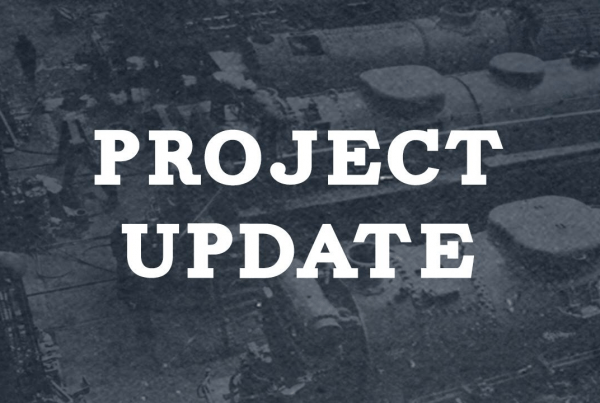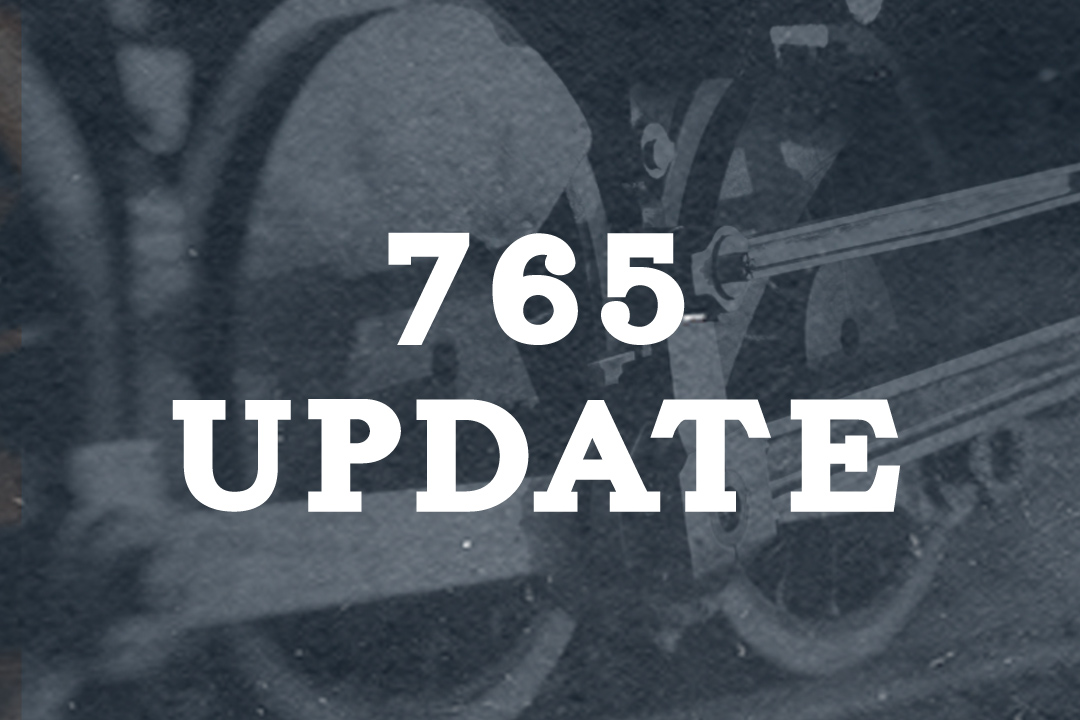Submitted by Steve Winicker.
LAST WEEKENDS SHOP ACTIVITY
Much of Saturday was taken up by the society’s safety training for all volunteers. Over 120 folks took part with more that will be taking the online course. Over the week John Jaress and I worked on the steam supply valve for the injector. We used a die on the valve stem and a tap on the bonnet. The tap cleaned up the threads in the bonnet and the valve now operates. The seats were lapped, and packing replaced, Mark and Grant put the valve back on the locomotive Sunday. At times in the past, this valve has been subjected to abuse with pipe wrenches used to open or close it. This stretched the threads in the bonnet and caused the valve to not operate properly. I believe much of the abuse was done years ago but preserving the functioning of this valve means not using force-multiplying devices to open or close it. This valve and many of the other turret valves will be difficult and expensive to replace, so take care of it and all the valves.
Jim, Rob, and Brian got the valve cover back on the locomotive Sunday. This completes most of the work needed prior to the Hydrostatic test on the 18th. I am still putting the final touches on the left rear blowdown lever which was not positively closing the valve. Matt welded in an extension on the connecting lever which should allow this valve to operate from the cab of the locomotive with a bit more control.
Other projects receiving attention include:
- The open-air project also made some advances moving out of the take it apart stages to the put it back together stage. Help is needed to get this car back into service.
- We set up some scaffolding next to the boxcar for eventual use in installing rubber roofing.
- Quite a bit of work was done on the 358 with wiring being connected to various appliances including the headlights and ditch lights.
UPCOMING ACTIVITIES
The 765 is largely ready for the hydrostatic test. In a week or so we will fill the boiler with water and heat it up to at least 70 degrees to make it ready for the test on the 18th. Once the hydrostatic test is completed a lot of work will be needed to get the engine put back together for a steam test in May followed by operations on CVSR.
SAFETY SENSE
Forklift accidents tend to be very serious, involving both personal injury and damage to property. These accidents can be avoided if operators use some common sense and follow safe operating procedures. Do not operate a forklift until you have been properly trained and authorized to do so.
Here are a few common safety rules to follow during forklift operation…
- · A parked forklift should have the forks flat on the floor with the controls set to neutral and with the parking brake set.
- · A forklift is “unattended” if the operator is more than 25 feet away or if the forklift is out of the direct vision of the operator. Unattended forklifts should be parked with the power turned off.
- · When operating the forklift on inclines, the load should always be on the uphill side of the incline. Drive forward going up the incline. Drive backward going down the incline.
- · When traveling without a load on the forks, keep the forks approximately four to six inches off the floor.
- · Never allow anyone to walk underneath a raised load.
- · Stop at all blind corners to check for other traffic in the area. This includes other forklifts and pedestrians. Honk your horn and look before you proceed.
- · If carrying a tall load that blocks your forward vision, drive in reverse and turn your head so you can see where you are going. Another option is to have a ‘pilot’ precede the forklift to assure there aren’t any obstacles or personnel in the path of travel.
- · If operating around other forklifts maintain a three-forklift length distance between forklifts and never attempt passing.
- · Never drive a forklift up to the back of a person who is unaware that the forklift is behind them.
Forklifts are excellent labor-saving devices. They save time and reduce the likelihood of injury associated with manual handling activities. Forklift safety is for everyone’s benefit.
SAFETY IS JOB 1
SAFETY FIRST ALWAYS


